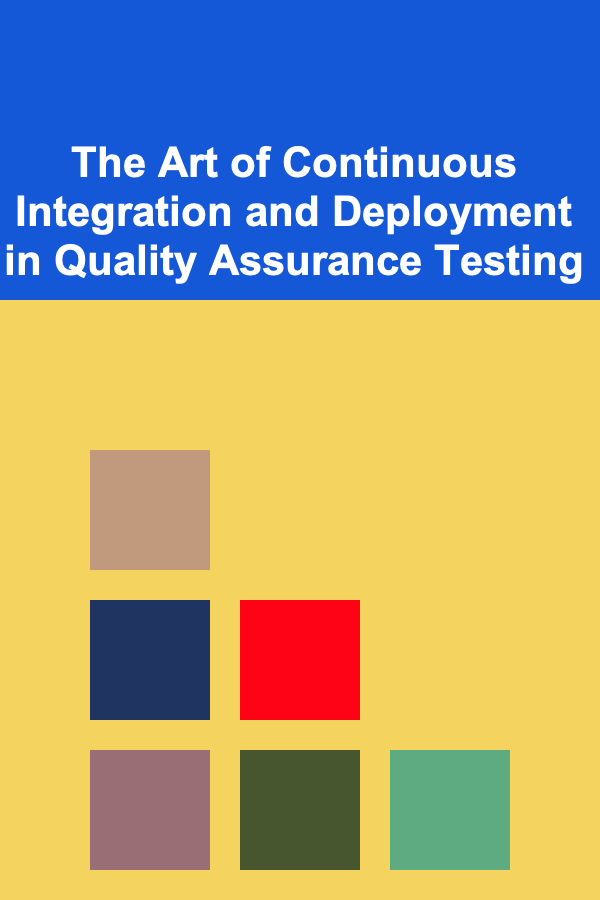
Cloud Systems Engineer's Toolkit: Tools, Techniques, and Best Practices for Cloud Success
ebook include PDF & Audio bundle (Micro Guide)
$12.99$9.99
Limited Time Offer! Order within the next:

The role of a Cloud Systems Engineer is both challenging and rewarding, requiring a combination of technical expertise, problem-solving skills, and deep understanding of cloud infrastructure. Cloud computing has revolutionized how businesses deploy, manage, and scale their applications. As organizations shift more of their operations to the cloud, the demand for skilled cloud systems engineers has skyrocketed. In this article, we will explore the essential tools, techniques, and best practices every cloud systems engineer should incorporate into their workflow to ensure cloud success.
Tools for Cloud Systems Engineers
1. Cloud Provider Platforms
A cloud systems engineer must be intimately familiar with the major cloud platforms: AWS, Microsoft Azure, Google Cloud Platform (GCP), and others like Oracle Cloud and IBM Cloud. Each platform offers a comprehensive suite of services for compute, storage, networking, and security. The key is understanding how to leverage these services for optimal system performance.
- AWS: Amazon Web Services is the most widely used platform, offering a vast array of services such as EC2 (compute), S3 (storage), VPC (networking), and RDS (databases). AWS also has a range of management and monitoring tools such as CloudWatch for logs and alarms.
- Microsoft Azure: Known for its seamless integration with Microsoft products, Azure is an ideal platform for enterprises already using Windows Server and SQL Server. Azure provides services like Virtual Machines (VMs), Azure Blob Storage, and Azure Active Directory.
- Google Cloud Platform: GCP excels in big data, machine learning, and containerized workloads. Key services include Google Kubernetes Engine (GKE), Google Cloud Storage, and BigQuery.
A cloud systems engineer should master the fundamental services and tools within the cloud environment they're working with. This knowledge allows them to optimize infrastructure, automate tasks, and troubleshoot more effectively.
2. Automation and Orchestration Tools
The future of cloud infrastructure is heavily automated. Cloud systems engineers need to be proficient in automation and orchestration tools to streamline their workflows and ensure scalability, reliability, and efficiency.
- Terraform: An Infrastructure as Code (IaC) tool that allows engineers to define and provision cloud resources using a high-level configuration language. Terraform helps automate cloud deployments and ensure consistency across environments.
- Ansible: Another popular IaC tool, Ansible is used for automating server configuration, application deployment, and orchestration. It simplifies complex automation tasks and integrates well with cloud environments.
- Chef and Puppet: These are configuration management tools that automate the process of managing large-scale infrastructure, enabling systems engineers to maintain consistency and reliability across cloud resources.
Automation not only saves time but reduces the likelihood of human error, which is essential when managing large and complex cloud systems.
3. Containerization and Orchestration
Containers and container orchestration platforms have become the backbone of modern cloud infrastructure. Cloud systems engineers should be proficient in containerization technologies and orchestration tools to manage microservices-based applications effectively.
- Docker: The most popular containerization tool that allows you to package applications and their dependencies into isolated environments. Docker makes it easier to develop, test, and deploy applications consistently across various environments.
- Kubernetes: An open-source container orchestration platform, Kubernetes helps manage and automate containerized applications at scale. It's a must-know tool for cloud engineers as it's commonly used with cloud platforms like AWS (EKS), Azure (AKS), and GCP (GKE).
- Helm: Helm is a package manager for Kubernetes, allowing cloud engineers to define, install, and upgrade complex Kubernetes applications. It simplifies the deployment of Kubernetes-based applications, making infrastructure management more efficient.
Proficiency in container technologies is a must for any cloud systems engineer, especially as more organizations adopt microservices and containerized architectures.
4. Monitoring and Logging Tools
Cloud systems engineers must ensure the continuous health of applications and infrastructure. Effective monitoring and logging tools are critical for identifying issues before they escalate and for maintaining high availability.
- Prometheus & Grafana: Prometheus is a leading monitoring tool, while Grafana is used for visualizing metrics. Together, they allow engineers to monitor cloud resources and services in real time, ensuring system reliability and performance.
- ELK Stack: Elasticsearch, Logstash, and Kibana (ELK) is a popular stack for searching, analyzing, and visualizing log data. It is particularly useful for troubleshooting and analyzing application logs in cloud environments.
- Cloud-native Monitoring Solutions : Each cloud provider has its own native monitoring solutions, like Amazon CloudWatch , Azure Monitor , and Google Cloud Operations Suite. These tools provide integrated monitoring, logging, and alerting functionality for managing cloud resources.
By using monitoring tools and keeping logs of system activity, engineers can proactively identify and resolve performance issues, ensure uptime, and meet Service Level Agreements (SLAs).
Techniques for Cloud Systems Engineers
1. Adopting the Cloud-Native Architecture
A cloud-native architecture is built specifically to take advantage of the cloud environment. It's designed for flexibility, scalability, and resilience, often using microservices and containerized applications. Cloud systems engineers must design systems with the following principles in mind:
- Microservices: Decouple applications into smaller, independent services. This approach allows for better scalability, maintainability, and faster releases.
- Serverless Computing: Use serverless functions like AWS Lambda, Google Cloud Functions, or Azure Functions to execute code without managing the underlying infrastructure. Serverless architecture reduces operational overhead and increases scalability.
- Distributed Systems: Cloud-native systems often require distributed architectures where workloads are spread across multiple regions and availability zones. Ensuring high availability and fault tolerance in such systems is crucial.
Cloud systems engineers should be proficient in designing and deploying cloud-native applications using best practices like automated deployment pipelines, CI/CD, and infrastructure automation.
2. Security Best Practices
Security should be at the forefront of every cloud systems engineer's mind. Cloud environments are highly dynamic, which makes security a complex and ongoing process. Here are a few best practices to ensure cloud security:
- Identity and Access Management (IAM): Use least-privilege access and enforce strong access controls by utilizing IAM tools provided by cloud platforms. Ensure that only authorized users and services have access to cloud resources.
- Encryption: Always encrypt data both in transit and at rest. Utilize cloud-native encryption services like AWS KMS (Key Management Service), Azure Key Vault, or Google Cloud KMS.
- Security Audits and Compliance: Regularly audit your cloud environment and ensure compliance with industry standards and regulations (e.g., GDPR, HIPAA, PCI-DSS). Use tools like AWS Config, Azure Security Center, or GCP's Cloud Security Command Center to manage compliance.
- Vulnerability Scanning and Penetration Testing: Use vulnerability scanning tools to identify potential security gaps in cloud resources and regularly perform penetration testing to evaluate the overall security posture of the cloud environment.
Security is an ongoing process, and a proactive approach helps cloud systems engineers safeguard cloud resources from emerging threats.
3. Disaster Recovery and Business Continuity Planning
Having a disaster recovery (DR) plan is critical in cloud systems engineering. Cloud environments can be highly resilient, but unexpected events like outages, natural disasters, or human errors can still occur. Ensuring business continuity and data protection involves:
- Backup Strategies: Implement automated backup solutions to ensure that critical data is regularly backed up and can be restored in case of failure.
- Multi-region Deployments: Distribute workloads across multiple regions and availability zones to ensure that your application can continue functioning in the event of a regional failure.
- Testing DR Plans: Regularly test disaster recovery plans and procedures to ensure that systems can be restored quickly with minimal downtime. Cloud engineers should test failover procedures, backup restoration, and other key components.
A robust DR plan ensures that services can continue operating in the face of adversity and helps avoid significant downtime or data loss.
4. Cost Management and Optimization
Cloud resources are billed based on consumption, which makes cost management an important aspect of a cloud systems engineer's role. Techniques for cost optimization include:
- Right-Sizing Resources: Regularly assess your resource usage and scale your infrastructure based on demand. This can involve adjusting instance types, optimizing storage, and managing unused resources.
- Spot and Reserved Instances: Take advantage of spot instances (e.g., AWS Spot Instances) for non-critical workloads and reserved instances for workloads that need guaranteed uptime. This can help lower costs significantly.
- Use of Managed Services: Where possible, use managed services like AWS RDS, Azure SQL, or Google Cloud Spanner to reduce the operational overhead of managing databases and other infrastructure components.
Optimizing cloud costs requires constant monitoring and adjustments, ensuring that resources are used efficiently while still meeting performance requirements.
Best Practices for Cloud Systems Engineers
1. Collaboration and Communication
Cloud systems engineers often work in multidisciplinary teams that include developers, architects, operations, and security experts. Effective communication and collaboration are crucial to ensure seamless deployments and troubleshooting. Use agile methodologies, DevOps principles, and collaborative tools like Jira, Confluence, or Slack to improve team efficiency.
2. Documentation
Documentation is essential in cloud engineering to ensure that systems are reproducible, maintainable, and scalable. Create detailed documentation for every infrastructure deployment, configuration, and automation script. This documentation ensures that the systems are easy to maintain and troubleshoot over time.
3. Continuous Learning and Adaptation
Cloud technologies are evolving rapidly. Cloud systems engineers should dedicate time to continuous learning. Staying up to date with the latest features, tools, and best practices can help engineers adapt to changing cloud landscapes and deliver more efficient and effective solutions.
Conclusion
The toolkit for a Cloud Systems Engineer encompasses a variety of tools, techniques, and best practices aimed at delivering efficient, secure, and scalable cloud solutions. By mastering cloud platforms, automation tools, monitoring solutions, security practices, and cost optimization strategies, cloud systems engineers can ensure that their cloud environments run smoothly and effectively meet the needs of their organizations. Through continuous learning and collaboration, engineers can stay ahead in the fast-moving cloud computing world.

How to Make Your Home Renovation Eco-Friendly
Read More
How to Set Up an Efficient Workflow for Crafting
Read More
How to Soundproof Hardwood Floors for Quiet Living
Read More
How to Start a Tailoring Business from Home: A Step-by-Step Guide
Read More
How to Store Your Cookbooks in Kitchen Drawers
Read More
The Art of Continuous Integration and Deployment in Quality Assurance Testing
Read MoreOther Products

How to Make Your Home Renovation Eco-Friendly
Read More
How to Set Up an Efficient Workflow for Crafting
Read More
How to Soundproof Hardwood Floors for Quiet Living
Read More
How to Start a Tailoring Business from Home: A Step-by-Step Guide
Read More
How to Store Your Cookbooks in Kitchen Drawers
Read More